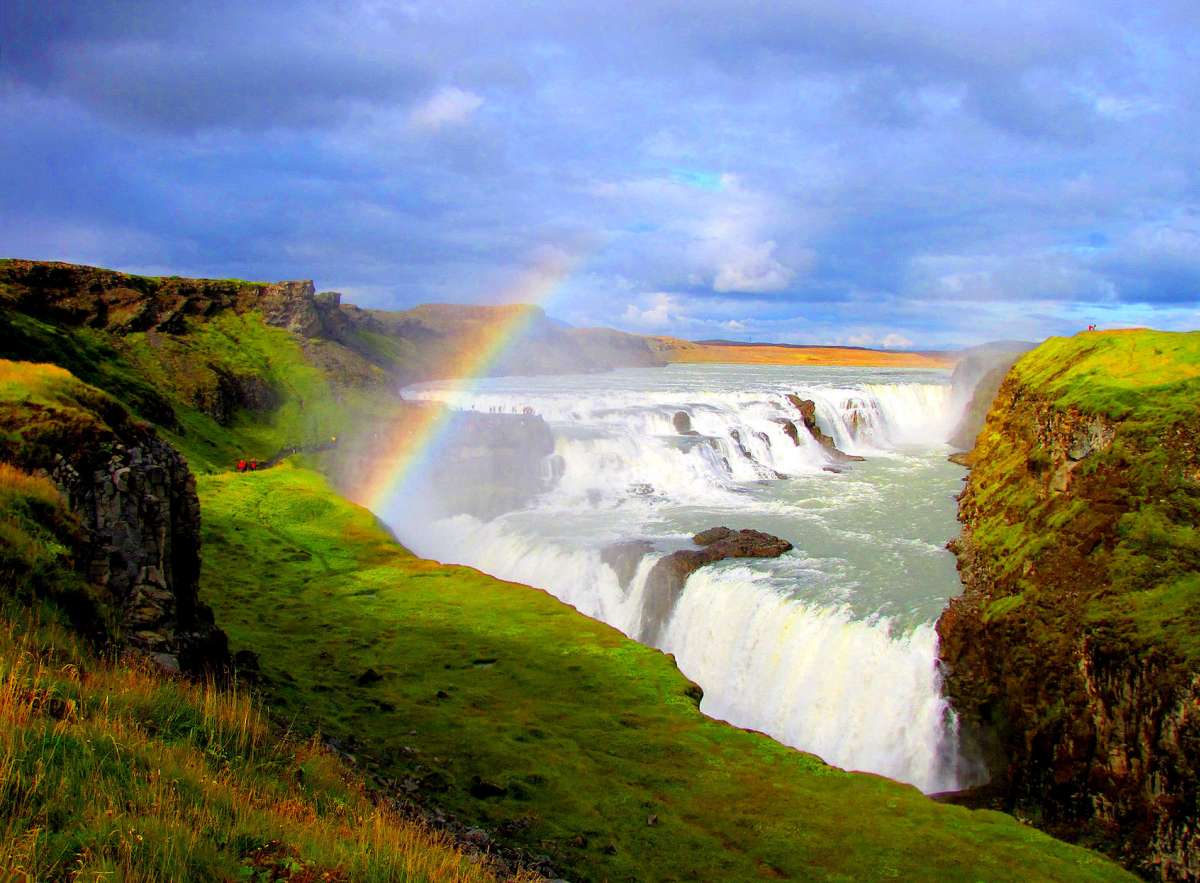Iceland may be one of the smaller nations in Europe, but it happens to be the location of many of the continent’s most impressive waterfalls. We take a closer look at what could be five of its best.
Skogafoss
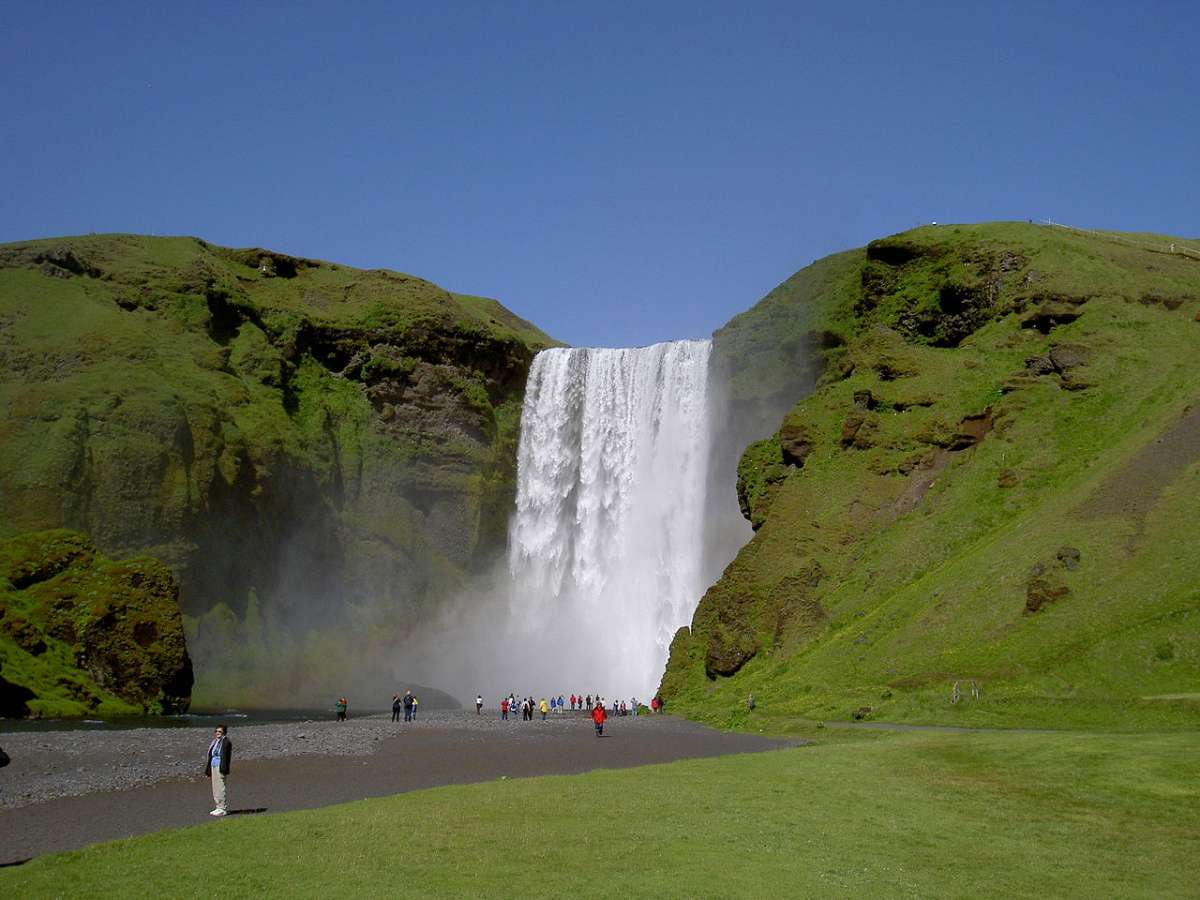
Skogafoss (c) wkimedia/Chris 73
Once upon a time Skogafoss was located right on the southern Icelandic coast, but this former sea cliff is now five kilometres from the shore, serving as a dramatic boundary between Iceland’s highlands and its coastal lowlands.
One of the biggest waterfalls in the country with a height of 25 metres, Skogafoss is perhaps most famous for its rainbow, which is almost always visible on sunny days – a phenomenon attributed to the amount of spray the fall produces, and nothing short of a photographer’s dream.
Among Iceland’s most-photographed natural wonders, it’s possible to drive almost right up to Skogafoss, which makes it a particularly popular stop-off for motorists travelling the southern stretch of Iceland’s ring road. Those with a little more time can walk one of the well-trodden paths for an alternative view; not only of Skogafoss but on a clear day the Atlantic Ocean, too.
Dettifoss
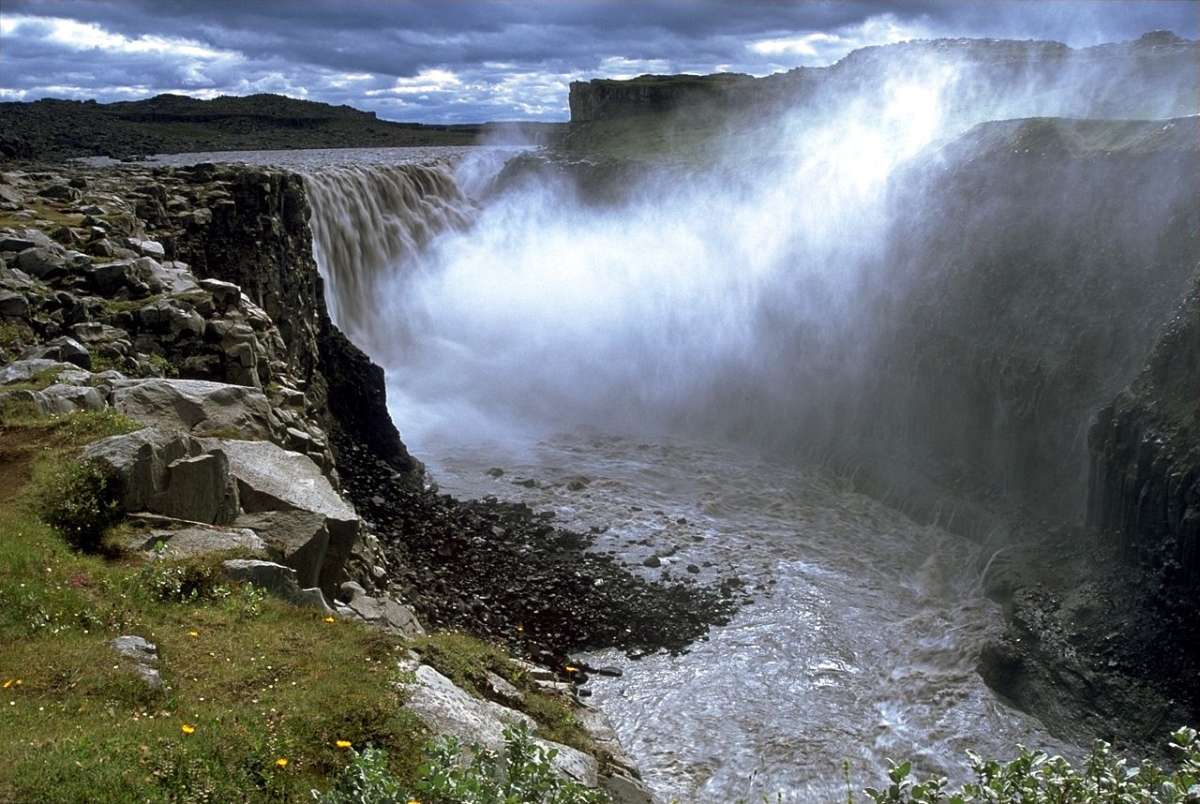
Dettifoss (c) wikimedia/Andreas Tille
It may not be as visited as Gullfoss or Skogafoss, but north Iceland’s Dettifoss lays claim to being Europe’s most powerful waterfall. And its continental accolades don’t end there: this is also Europe’s biggest waterfall in terms of the amount of water discharged – 193 cubic metres per second, in case you were wondering.
Located on the Jokulsa a Fjollum River in Vatnajokull National Park, Dettifoss is an impressive 100 metres wide and 45 metres high, with water pummelling into the Jokulsargljufur canyon below (a feature often likened to America’s Grand Canyon, albeit on a smaller scale). Because the waterfall faces tall cliffs on both sides, the most impressive views are from the west, where Dettifoss can be seen in its entirety. The spectacle is so otherworldly that after it appeared in 2012 science fiction film Prometheus, Dettifoss is just as often referred to as the Prometheus waterfall in name.
Seljalandsfoss
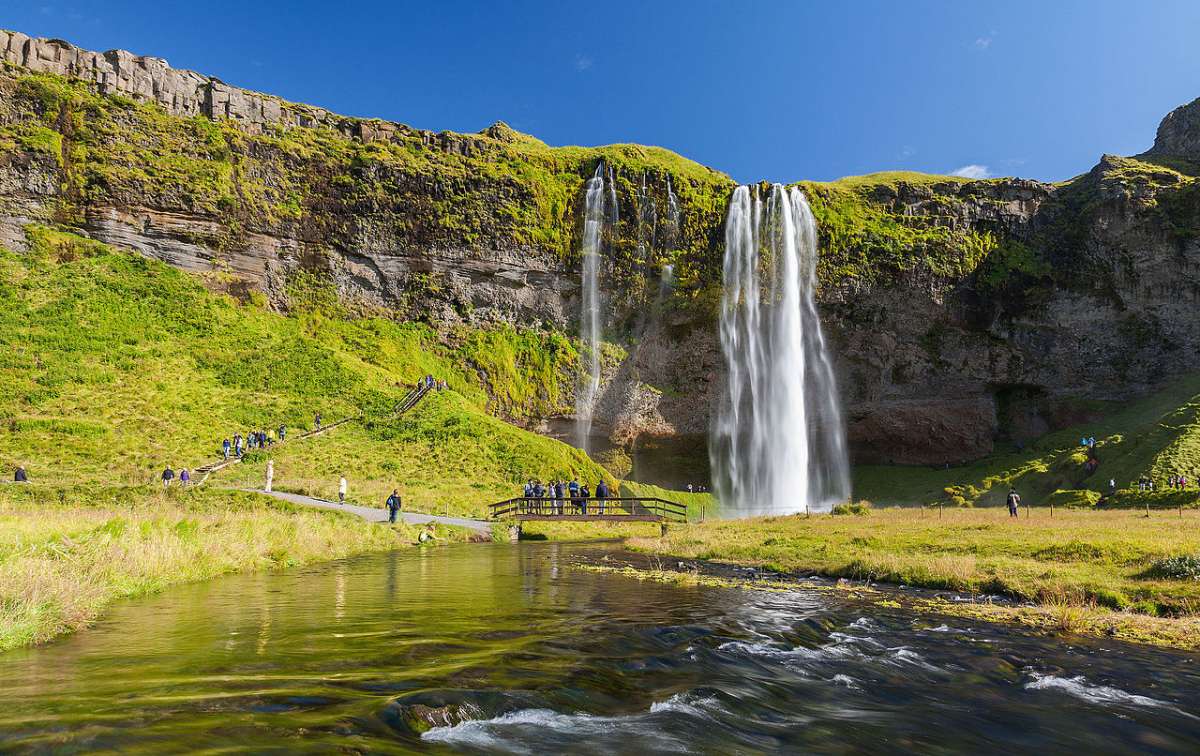
Seljalandsfoss (c) wikimedia/Diego Delso
It’s not just the 65-metre drop that attracts visitors to Seljalandsfoss, but the opportunity to walk behind the cascading falls.
Located between Selfoss and Skogafoss close to the main ring road, the first thing you notice on the approach to the falls are their remarkably green surroundings. As you get closer, you’ll notice the lushness is complemented by yellow and violet flowers – such as the intensity of Seljalandsfoss’s spray that it constantly breathes life into surrounding flora and fauna.
But unlike other waterfalls in Iceland, your walk doesn’t stop on arrival at the falls. Instead, you can carry on strolling behind Seljalandsfoss, which makes some for fantastic photographs – especially so during the evening, where the crowds disperse and the light is subtler.
Godafoss
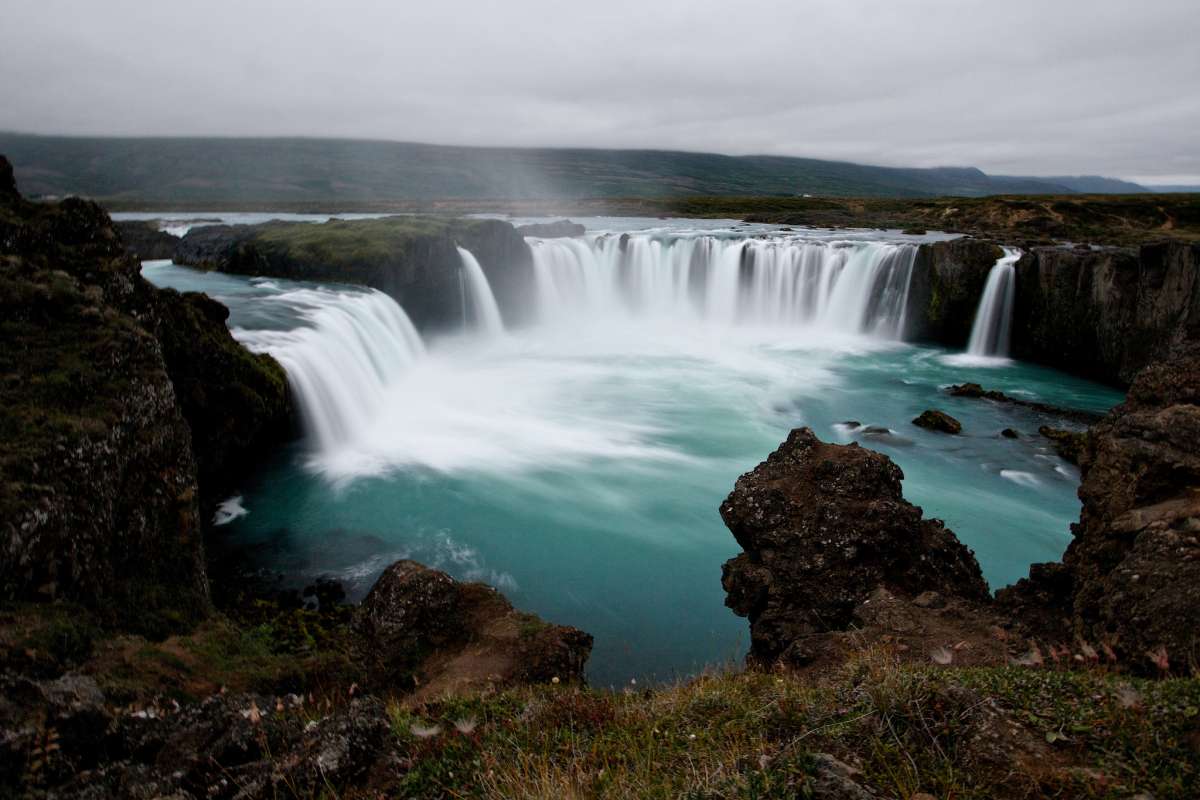
Godafoss (c) flickr/Marco Bellucci
The Waterfall of the Gods is so named because, according to the Icelandic Saga of Christianity, Thorgeir, a former pagan chieftain, denounced his beliefs by throwing wooden carvings of pagan gods into the falls.
Such a grand name and history hints at the grand spectacle awaiting the visitor, and chances are they won’t be disappointed. Located in the Myvatn district in northern-central Iceland, Godafoss is found at the start of Sprengisandur highland road – and it’s here that the water of the River Skjalfandafljot majestically falls 12 metres from a width of 30 metres. Picture the archetypal perfect waterfall in your mind’s eye, and chances are it will look something like Godafoss.
Gullfoss
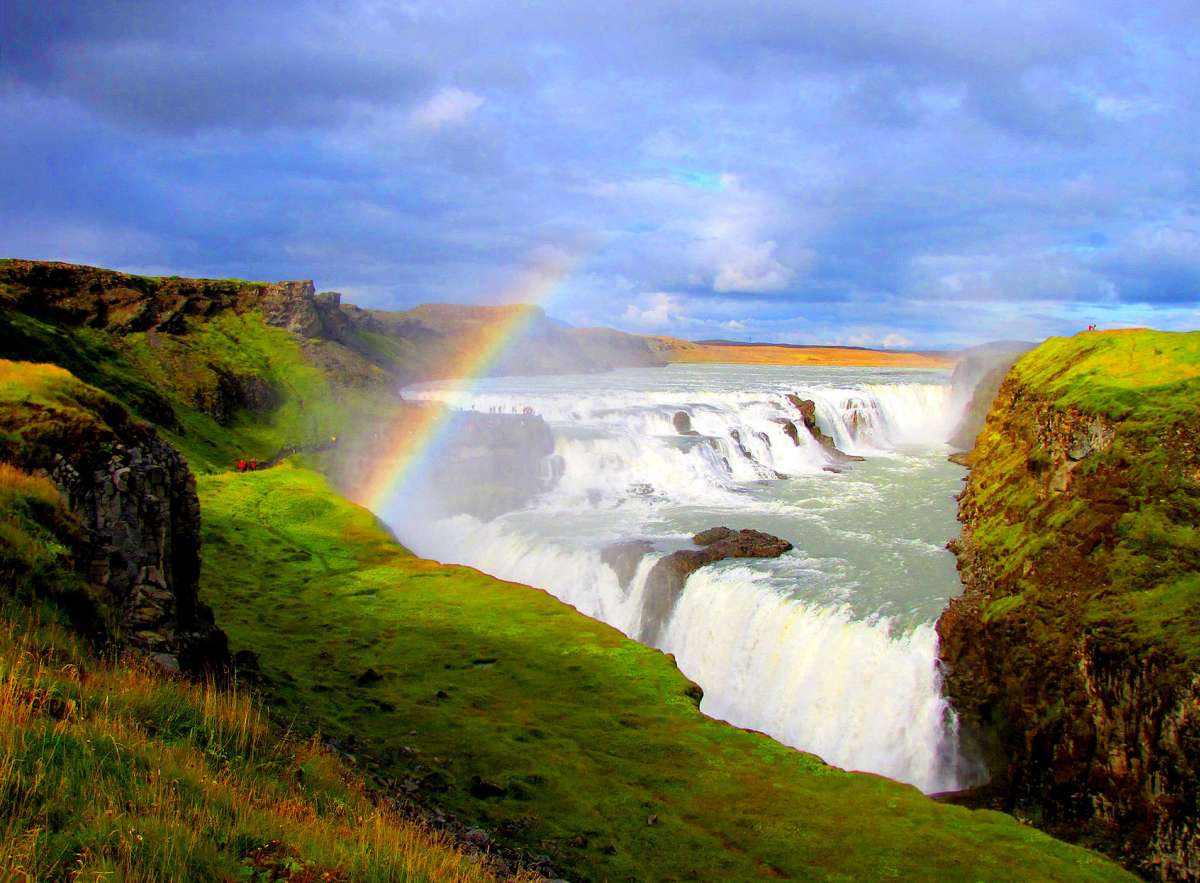
Gullfoss (c) flickr/O Palsson
This multi-tiered monster of a waterfall is a key Golden Circle attraction and one of Iceland’s most-visited natural wonders. And on the approach to Gullfoss, where the wide River Hvita seemingly vanishes into the ground, it’s easy to see why. Part of Gullfoss’s charm is that it’s partially obscured from view until you get really close, and when you do its vast scale suddenly becomes apparent. There are two main ‘plunges’ – first 11 metres then 21 metres, with the water eventually ending up in a crevice 32 metres deep. It’s a sight that will leave you open-mouthed and reaching for your camera.
Seeing this waterfall up close and personal promises to be an utterly breathless experience: the refreshing spray, the awe-inspiring views, the sound of hundreds of gallons of water plunging into the earth – Gullfoss is a spectacular sight.
You may also like Road trip around Iceland’s ring road
Source : https://www.thetravelmagazine.net/iceland-top-five-waterfalls/


